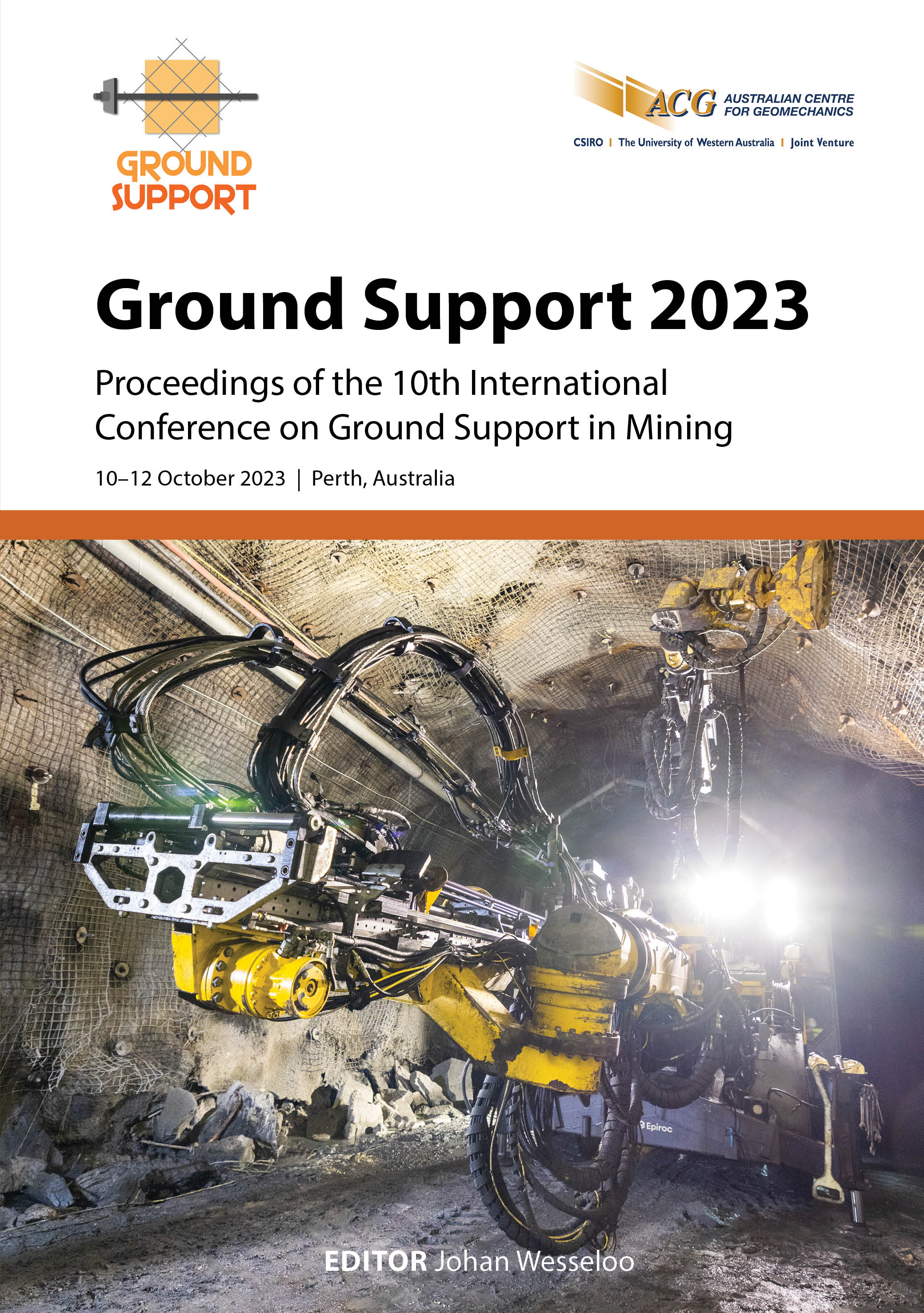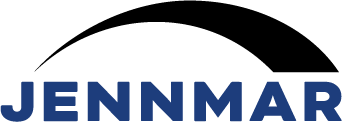Automated ground support deformation monitoring: a novel method with new opportunities for geotechnical engineers

|
Authors: Franke, J; Gonzalez, C |
DOI https://doi.org/10.36487/ACG_repo/2325_04
Cite As:
Franke, J & Gonzalez, C 2023, 'Automated ground support deformation monitoring: a novel method with new opportunities for geotechnical engineers', in J Wesseloo (ed.), Ground Support 2023: Proceedings of the 10th International Conference on Ground Support in Mining, Australian Centre for Geomechanics, Perth, pp. 75-90, https://doi.org/10.36487/ACG_repo/2325_04
Abstract:
One of the regular tasks of geotechnical and mining engineers is the measurement and management of ground deformation in underground excavations. Although other methods have historically been used to do so, light detection and ranging (LiDAR) has emerged as the most suitable technology for this application because it caters for quantitative and omission-free rather than merely qualitative tracking. Regular scanning has shown it to be highly advantageous for mines with swelling or squeezing ground, and those with rapid deformation. Despite the LiDAR potential for tracking underground mining voids, its adoption has been slow because associated conventional data processing is time consuming and requires training, upskilling, and devotion by geotechnical engineers. This often becomes a bottleneck to bringing this method into use. Our paper introduces a new solution of fully automated LiDAR point cloud data processing dedicated to void deformation tracking that not only enables geotechnical engineers to avoid having to learn unrelated skills, but also provides immediate output of sophisticated reporting deliverables. This opens up the opportunity to monitor many more excavations at a higher frequency and gain much better insights than is possible with conventional manual processing tools and methodology. Secondly, this paper presents how this new processing methodology utilises cloud-based data storage and processing infrastructure that allows onsite users to become independent of local IT constraints and to avoid otherwise applicable limitations in storage and viewing of what are very large files. Critically, automatically generated 3D files for localised deformation assessment, as well as automatically generated summary reports presenting key deformation tracking analysis outcomes to decision makers, facilitate the detection and understanding of:
Keywords: LiDAR, automation, convergence monitoring, automated point cloud processing, instrumentation and monitoring
References:
Australian Centre for Geomechanics 2022, Ground Support in Underground Mining Short Course, course notes, Australian Centre for Geomechanics, Perth.
Franke, J & Gonzalez, C 2022, ‘Automated omission-free geotechnical deformation monitoring – a new method deployable by non-specialists’, Proceedings of Ausrock Conference 2022, Australian Institute of Mining and Metallurgy, Carlton, pp. 15–17.
Franke, J & Gonzalez, C 2023, VoidMapper, version 3, cloud-based computer software, Caroni Geospatial, Perth,
Government of Western Australia 2020, Work Health and Safety Act 2020, Perth.
Han, X, Sun, S, Song, X & Xiao, G 2018, ‘3D point cloud descriptors in hand-crafted and deep learning age: state-of-the-art’, arXiv Computing Research Repository (CoRR), .
Jones, EW 2020, ‘Mobile LiDAR for underground geomechanics: learnings from the teens and directions for the twenties’,
in J Wesseloo (ed.), UMT 2020: Proceedings of the Second International Conference on Underground Mining Technology, Australian Centre for Geomechanics, Perth, pp. 3–26,
Kamp, C 2022, ‘Management of production drift convergence and redevelopment’, in Y Potvin (ed.), Caving 2022: Fifth International Conference on Block and Sublevel Caving, Australian Centre for Geomechanics, Perth, pp. 831–848,
Mercier-Langevin, F 2019, ‘Ground support: a mine manager’s perspective’, in J Hadjigeorgiou & M Hudyma (eds), Ground Support 2019: Proceedings of the Ninth International Symposium on Ground Support in Mining and Underground Construction, Australian Centre for Geomechanics, Perth, pp. 29–40,
Potvin, Y & Hadjigeorgiou, J 2020 (eds), ‘Ground support performance data’, Ground Support for underground mines, Australian Centre for Geomechanics, Perth.
Singh, SK 2022, Optimising Mobile Laser Scanning for Underground Mines, PhD thesis, University of New South Wales, Sydney.
Western Australian Ground Control Group 2023, GCMP/Legislation Meeting, meeting notes, Perth.
© Copyright 2024, Australian Centre for Geomechanics (ACG), The University of Western Australia. All rights reserved.
View copyright/legal information
Please direct any queries or error reports to repository-acg@uwa.edu.au
View copyright/legal information
Please direct any queries or error reports to repository-acg@uwa.edu.au
